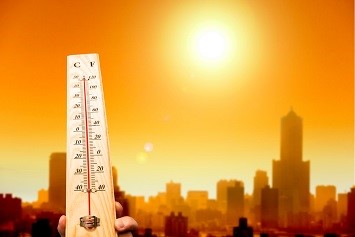As summer approaches, it is important to consider heat conditions for workers. Operations involving high temperatures, radiant heat sources, high humidity, direct physical contact with hot objects, or strenuous physical activities have a high potential for inducing heat stress. Facilities that require workers to wear semi-permeable or impermeable protective clothing are likely to cause heat stress among heat exposed workers.
Under OSHA’s General Duty Clause, Section 5(a)(1) of the OSHA Act of 1970, employers are required to provide employees with a workplace free of hazards likely to cause death or serious harm to employees. This includes heat-related hazards. The National Institute for Occupational Safety and Health (NIOSH) recommends that employers provide workers exposed to heat with appropriate hydration and encourage workers to keep themselves hydrated. It is recommended that workers exposed to heat drink 8 ounces of water every 15-20 minutes and replenish electrolytes during prolonged periods of sweating.
Two serious heat illnesses to be aware of are:
Heat Exhaustion
The signs and symptoms of heat exhaustion are headache, nausea, vertigo, weakness, thirst, and giddiness. Fortunately, this condition responds readily to prompt treatment. Heat exhaustion should not be dismissed lightly, however. The fainting associated with heat exhaustion can be dangerous if the victim may be operating machinery or controlling an operation that should not be left unattended. Also, the victim may injure them self when he or she faints.
Heat Stroke
Heat stroke occurs when the body’s system of temperature regulation fails, and body temperature rises to critical levels. This condition is caused by a combination of factors and is difficult to predict. Heat stroke is a medical emergency. The primary signs and symptoms of heat stroke are confusion, irrational behavior, loss of consciousness, convulsions, a lack of sweating (usually), hot, dry skin, and an abnormally high body temperature. If body temperature is too high, it can cause death.
Here are some tips to keep workers healthy in the heat:
1. Drink water every 15 minutes, even if you are not thirsty.
2. Wear a hat and light-colored clothes.
3. Know where you are working in case you need to call 911.
4. Rest in the shade.
Prevention of heat stress in workers is crucial. Worker training on identifying types of heat stress and how to avoid them is key to heat stress prevention in the workplace.
Spencer-SHE’s team of experts is available for heat stress program development and implementation. We offer compliance training at your facility, remotely through our training portal, or in a blended learning format consisting of both interactive online training and in-person training. Contact us today to learn more about our compliance services!
Photo Source: EHS Daily Advisor

